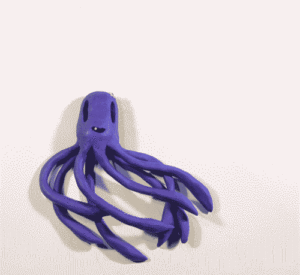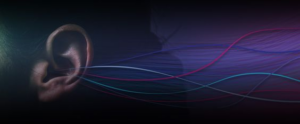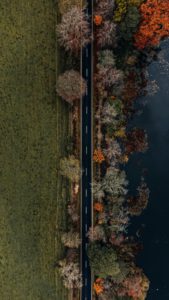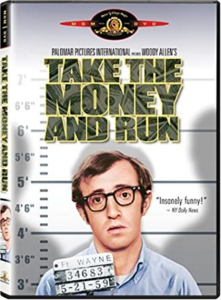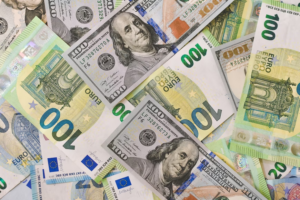VFX stands for visual effects. Visual effects create or manipulate film imagery to add a sense of realism to visual storytelling. The art of visual storytelling involves your ability to translate your imagination to visual effects to show your audience what you conceive in your mind. Hence, visual effects play a pivotal role in improving a movie’s experience.
VFX helps you explore an unexplored world that exists in a director’s mind. They are also available in action and fantasy movie genres. These effects are often accomplished with the help of a dedicated artist who is designated as the VFX artist. A VFX artist specializes in generating imagery using specific VFX software or a computer. Some of the standard VFX software available include:

Source: Pinterest
Common VFX Softwares
What Software Makes the BEST VFX???
Then, they blend these artificially-generated images with the actual footage to create a realistic environment for your viewer. Hence, visual effects are often implemented during post-production. Accordingly, you can use it:
VFX Uses
- To add impressive content to the movie

Source: Pinterest
- To create an imaginary environment

Source: Pinterest
- To shoot in a location where live-action shooting is risky.

Source: Pinterest
- To add special effects to a movie

Source: Pinterest
VFX Games – The Art of Compositing
How Avengers: Endgame’s Visual Effects Were Made | WIRED
Avengers: Infinity War | VFX Breakdown | Framestore
Lessons from 7 years of VFX. An interview with Wren Weichman of Corridor Digital
Visual Effects vs. Special Effects
There is a vast difference between visual effects and special effects. To know when to use each of them in your film, you need to be clear of what they are:
| Visual effects | Special effects |
| VFX requires a computer for implementation. | SFX encompasses elements like pyrotechnics, fake rain, or prosthetic makeup. |
| Visual effects do not take place during the actual shoot. | Special effects are realized on set. |
| Visual effects create, enhance or manipulate images for film or other media. | Special effects are made using a model or animatronics on a location set. |
|
Examples of visual effect
|
Examples of special effects
|
| VFX are considered digital effects as they enhance the quality of visual storytelling. | SFX are considered practical effects, as they are functional elements that feature while the movie plot unfolds. |
Special Effects vs Visual Effects (SPFX vs VFX) – Film Making for Newbs
SFX or VFX – what’s the difference and which to use for your film | TOP 6 TIPS
SFX Makeup Artist Reviews SFX Makeup in Film, from ‘The Godfather to ‘Guardians of the Galaxy
MIND-BLOWING VISUAL EFFECTS Compilation | Curlykidlife
History of Visual Effects
Following the French inventor Louis Le Prince’s automated stage for motion pictures, visual effects came into existence. Later, the below developments contributed to the quality of visual effects.
| 1902 | The French inventor Georges Méliès used stop-motion animation for the first time. |
| 1908 | Georges Méliès introduced the technique of double exposure in film. |
| 1927 | The introduction of the first practical optical printer facilitated the creation of three-dimensional images. |
| 1930 | The use of optical compositing came into existence. The use of this technology created an illusion of depth for two-dimensional images. |
| 1950 | The evolution of computer technology promoted the integration of special effects. |
| 1960 | Visual effects began playing a significant role in film production. |
| 1970 | The invention of digital technology helped create realistic images and develop computer graphics or CGI. |
| 1980 | The introduction of the digital camera marked the birth of digital compositing. This technology combined digital image manipulation with traditional visual effects. |
| 1990 | The look of visual effects was enhanced with the development of photo-realistic visual effects (PFX). |
| 2000 | Real-time digital compositing emerged, which helped integrate live-action footage with CG images. |
Today, sophisticated technological innovations and discoveries have a stunning impact on movie quality. Hence, it is essential to use a VFX in your films. First, however, you need to know the different types of VFX to create the best visual effect.
The History of VFX – Adam Ioannou
Expert breaks down most iconic VFX moments | Expert Opinion
Types of Visual Effects
Visual effects are classified into different types. These types can feature either during a film’s production or in controlled production studios using specific software.
1. Computer Generated Imagery (CGI)
Computer-generated imagery (CGI) is a visual effect that generates images using computers only, whereas other types use them to enhance or combine live-action footage. These images may be either 2D or 3D. However, a 3D representation of an image helps you achieve the best visual impact. Therefore, this effect is most useful when:
- You want to create something non-existent, e.g., a dinosaur.
- You wish to throw light on the delicate details of a scene. E.g., when you want to show a group of people watching a football match.
Top 6 CGI Movies of the Decade! | VFX Breakdown
Amazing Before & After Hollywood VFX – Part 1
2. Compositing and Green Screen VFX
Compositing is a visual technique that collects visual elements from respective sources to create a single image. The single image makes the viewer believe that all the visual elements belong to the same scene.
Alternatively, the Chroma key is another technique that involves filming in front of a single-color flat screen. It helps you create realistic other-worldly scenes due to its technical prowess. This screen is usually blue or green. However, depending upon your requirement, you can choose between any screens.
Top 5 Tips: Improve your VFX compositing
Green Screen vs. Blue Screen
Usually, a green screen is used when the movie set contains a background. However, a blue screen helps avoid distractions as it uses a black backdrop to hide objects or people. It is the most suitable for live-action and animated movies.

Source: Pinterest

Source: Pinterest
VFX in Hollywood – Green/Blue Screen
3. Motion Capture
In this technique, you record an actor’s movements and transfer this information to a computer to animate digital character models. It is called performance capture when you capture the expressions on their face and fingers. In films and videography, motion tracking is referred to as match moving.
Match moving is used to match an actor’s movement against a green screen with live-action footage. However, today it is used to create incredible effects during post-production. Hence, it promises a seamless movie experience. In addition, for accurate integration, you need to consider the below factors concerning the objects in the shot.
- Position
- Scale
- Orientation
- Motion
Once you finalize the type of visual effect to use, you need to think of the visual techniques to adopt. Some of the visual effect techniques to include in your movie plot are:
VFX Techniques
Filmmakers adopt different techniques to achieve visual effects. They include:
Bullet time

Bullet time was a favorite VFX technique used in filmmaking. It gives a slow-motion effect and emphasizes the intricate details of an action.
Doubling
The act of doubling involves projecting twins or clones. In reality, an actor who doesn’t have a twin is filmed individually at different locations, and the resultant footage is combined to project twins or clones.

Source: Pinterest
How Hollywood Twins Scenes Have Evolved Over 100 Years | Movies Insider
What is a Visual Effect Pipeline?
A visual effect pipeline encompasses the different stages of production at which visual effects are added to a film.
To understand how the VFX pipelining is executed, you need to know the different phases of film production. They are:
Pre-production: This phase includes activities such as :
- The conception of the film’s idea,
- Scripts
- Budgets
- Timelines
- Casting
- Location
Production: The filming process begins either at a location or in a studio.
Post-production: In this phase, visual effects, audio, editing, and color grading are added to make the film ready for distribution.
The VFX pipelining happens mostly during post-production. There are 12 steps in the VFX pipeline. They include:
1. Storyboarding and animatics
A VFX artist creates a visual representation of the film’s scenes during this phase. For this purpose, they analyze a character’s movement and settings to define a shot through drawings. Then, the production team begins their work based on these inputs.
Into the Unknown (From “Frozen 2″/Storyboard to Final Frame Version)
ZOOTOPIA – StoryBoard Side by Side
Storyboard Jurassic Park T Rex Scene
2. Pre-vis
Pre-vis involves the participation of 3D artists and the production team to create a 3D representation of the scenes. This helps to decide the camera angle and skip complicated settings.
Avengers: Endgame – Previs Reel
3. Concept Art and Design
This phase is one of the most significant aspects of pre-production that determines the mood and style of the film. A concept artist designs the settings, characters, props, costumes, lighting, and color.
4. Matchmove and Camera Tracking
In this phase, a 3D camera is generated to help the VFX team to create 3D characters and objects. These are then integrated with the original footage through the process of rotomation. Rotomation is the process of matching a character’s motion with the footage.
5. Layout and Production Design
Layout or production design involves the visual representation of the final movie set:
- It helps the set builders decide if they could physically build the setting or be digitally incorporated.
- The VFX team pitches in and determines how to integrate the set digitally.
- The production designers finalize the location.
Production Design — Filmmaking Techniques for Directors: Ep2
How Hollywood Creates Immersive Worlds | Production Design Explained
6. Modeling and Asset Creation
The 3D modeling and texturing teams work to promote cost-effectiveness. They are one of the first teams to be involved in post-production: the model assets, correct lighting and shadows.
7. Research and Development (R&D)
During this phase, VFX supervisors collaborate with the directors to decide to accomplish certain shots. In addition, they also invest their time in research to improve the efficiency of the final shots.
8. Rigging
A rigging team develops a digital skeleton before animation and replicates a character’s movement. They add bones and calculate and implement skin weights and muscles to achieve this.
3D Animation Rigging Technique & VFX
9. Animation
The animators add texture to the rig and use custom controls to bring life to a character, prop, or vehicle. Finally, the movement of these characters is sequenced using software to produce the final animation. In addition, they use motion capture data to achieve the completed look.
Why Lighting Animated Movies Is So Complicated | Movies Insider
10. FX and simulation
Once the animations are complete, the FX artist comes into the pictures to add simulations like destruction, fire, liquids, smoke, and particles. In addition, they may be indulged in creating footsteps in the snow or adding hair to a character.
FX + Simulation Reel | Image Engine VFX
11. Lighting and Rendering
Once the visual effects are added and blended with the scenes, a lighting artist pitches to make the light color, intensity, and shadows seamless across the frame. These frames are then aligned to a camera angle and given to the compositor.
8 Steps to Cinematic Lighting | Tomorrow’s Filmmakers
12. Compositing
Finally, the compositor layers the film’s elements on top of each other. These elements create an illusion of a single image. In addition, they may add an animated character or overlay simulations to bring a specific effect. To know the practical examples of VFX in movies, you need to know some famous VFX examples in films.
VFX Examples in Movies
Here are some famous VFX examples for your perusal:
Dumbo (2019)
The movie Dumbo was shot with a photorealistic elephant. It began as a clay model and was scanned into the computers for animation.

Source: Pinterest
Dawn of the Planet of the Apes (2014)
Dawn of the Planet of Apes brings out the most natural performance with a combination of motion-capture footage and hand-drawn animation.

Source:Pinterest
Dawn of the Planet of Apes- VFX breakdown
The Matrix (1999)
This film features a unique scene that employs the technique of bullet time. For this purpose, the team utilized 112 sequence cameras triggered in sequence.
Matrix making of the bullet time scenes
Man of Steel (2013)
In this movie, we saw Superman flying against the vast expanse of the sky. However, you find the scene shot against a green screen in reality. The act of flying was mimicked with the help of wires. Superman, Henry Cavill, was fastened to these wires, which were projected as flying during post-production.

Source: Pinterest
Life of Pi (2012)
The movie Life of Pi features the relationship between a young boy and a tiger. The scenes involving the tiger were utterly animated. Special effects played a part in creating the presence of the tiger during the post-production phase.
Pirates of the Caribbean: Dead Man’s Chest (2006)
This movie features a fearsome character known as Davy Jones. The appearance of Davy Jones was made alarming with the help of impressive special effects that enhanced the movie’s experience for the viewers.

Source: Pinterest
Oz the Great and Powerful (2013)
In Oz, the Great and Powerful, a scene appears wherein James Franco is violently thrown onto a river. However, in reality, a soundstage was used to achieve this effect.

Source: Pinterest
The Dark Knight (2008)
In this movie, Aaron Eckhart was shown to have a gruesome facial appearance with the help of special effects.

Source: Pinterest
You might be excited to become a VFX artist who bursts with creativity and enthusiasm from the above examples. In this case, you might also be curious enough to know a VFX artist’s salary, educational qualifications, and job outlook. So here are the details for you:
How to Become a VFX Artist?
| Basic Educational Qualifications | A degree in graphic design, animation, or art. |
| Required Skills |
|
| Essential Tools to know | Adobe software (After Effects, Photoshop, Illustrator, Premiere Pro) |
Salary
The average VFX artist’s salary is $87,750 per year in the USA. As a fresher, you might start at $68,250 per year. However, as experience refines your skill, you can make up to $126,250 per year.
Career Options
A VFX artist can begin their career in any of the below industries.
- TV channels/ Production Houses
- VFX studios
- Gaming Industry
- Media and Advertising
- Freelancer
However, they may start with the below-mentioned roles:
- Storyboard artist, VFX artist
- Motion graphic artists.
- Color key artist
- Asset Development
- Architectural Modeling
- Roto Artist
- Paint Artist
- Junior compositor
- Compositing artist
- Match move artist
- Matchmaking Artist
- Short filmmaker
- Editor
TOP 5 SKILLS ALL NEW VFX ARTISTS SHOULD LEARN – FUNDAMENTALS!!
Final Thoughts
Therefore, visual storytelling is all about perception. Visual elements are a powerful tool that impacts your audience’s perception of your movie. Hence, to achieve this, you need to seek the aid of a VFX artist. To become a successful VFX artist, you need to know how to work with software and have basic knowledge of the movie-making process. In addition to this, a significant portfolio of your work will help you achieve your goal.


